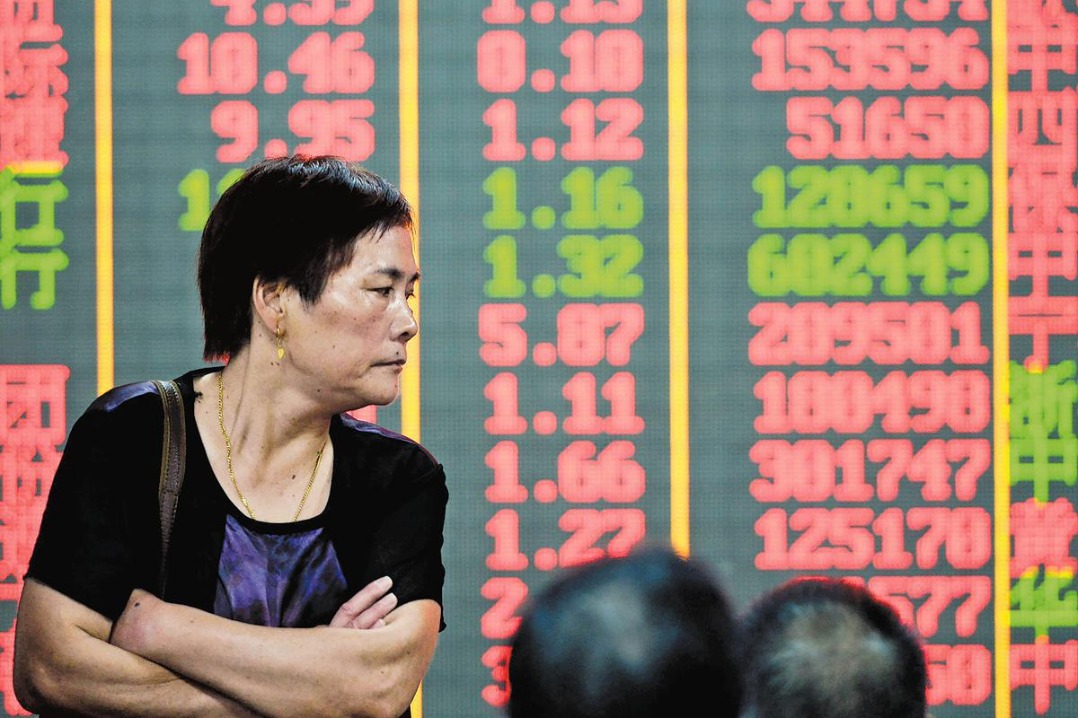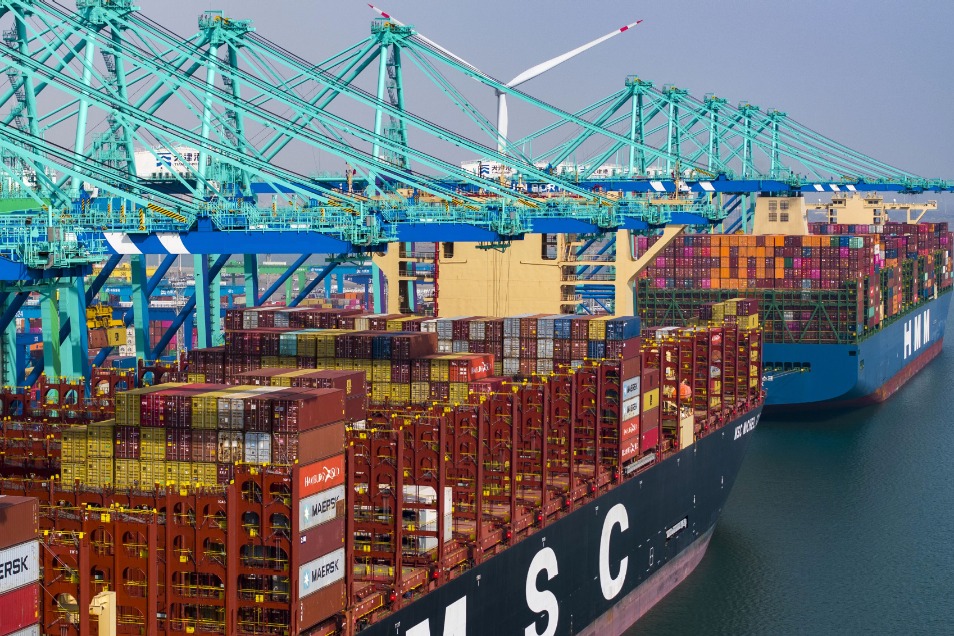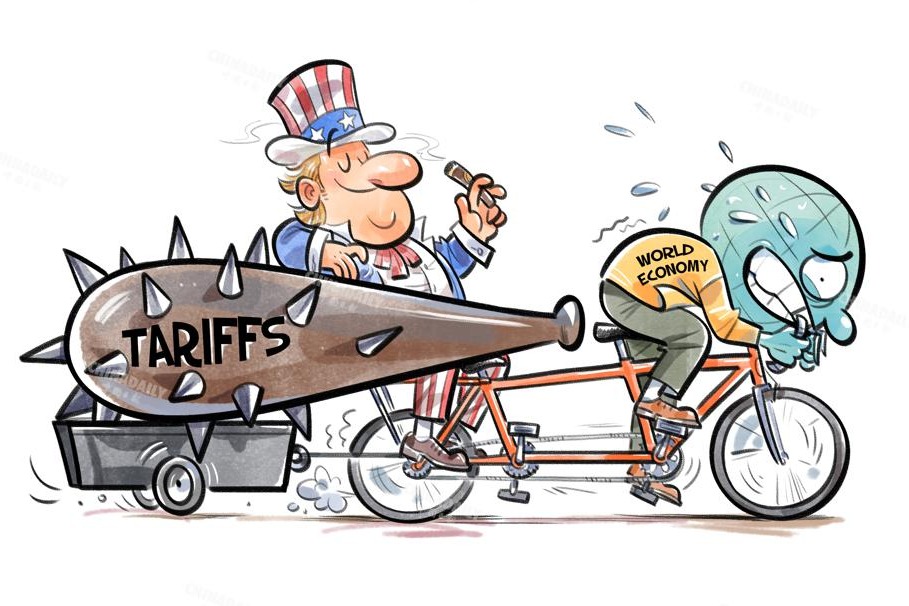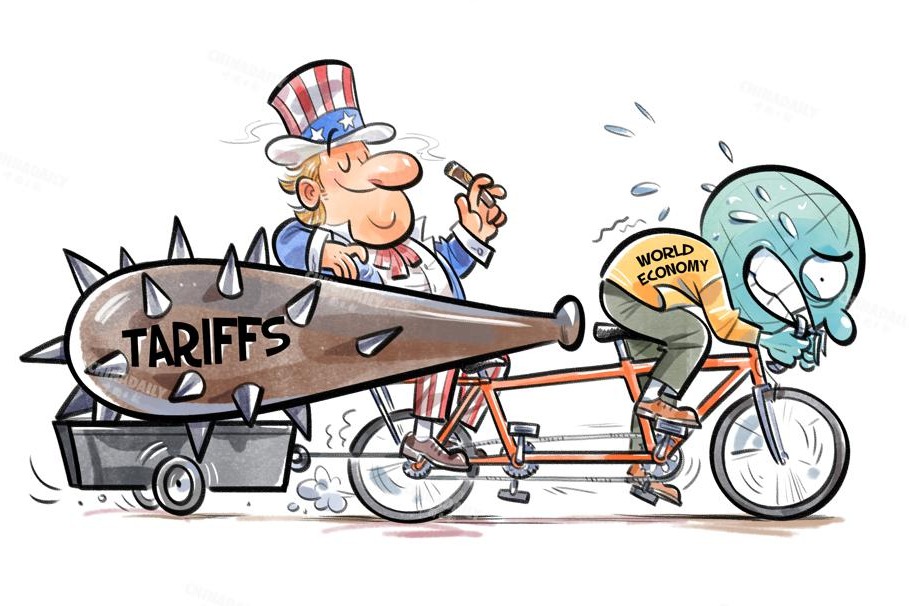Make RCEP stronger against tariffs


With US President Donald Trump imposing nonsensically high rates of tariffs on goods from almost all countries, the entire world is lamenting that this is the end of globalization as we know it. Although the tariff rates are expected to be as low as zero on goods with at least"20 percent US content", the US' punitive tariffs are likely to skyrocket to a level not seen since 1930. In fact, Trump has threatened to impose 50 percent more tariffs on Chinese goods after China responded in kind to the US' slapping of an additional 34 percent of Chinese imports.
The world benefited from the US-led global trade order for 90 years. When imperialism ruled the roost and national sovereignty was not respected, former US president Woodrow Wilson's "14 points" in 1918 set the tone for countries' self-determination irrespective of their size. The Reciprocal Trade Agreements Act passed in 1934 gave then US president Franklin Roosevelt the authority to cut tariffs on a reciprocal basis, and the Atlantic Charter co-signed by Roosevelt and then British prime minister Winston Churchill in 1941 declared that they support international trade liberalization and the right of all countries to self-governance.
These laws and treaties laid the foundation for the creation of postwar multilateral trade organizations, rules and system that spurred development and helped build a relatively peaceful global environment. Access to the US market, technologies, knowledge and capital has facilitated the miraculous growth of most Asian economies including Japan, the Republic of Korea, and the ASEAN tiger, Singapore. It did the same for China.
But those days are over. With the US falling back on the pre-war global trade order — marked by zero-sum games, unilateralism and disrespect for rules — the questions that arise are: What's next? What will the US-led new global trade order look like? And what kind of role will the US play in it?
What we know for certain is that the benefits of open trade are too big to be abandoned, especially for small open economies like ASEAN countries that rely on trade to create jobs, earn foreign exchange, and facilitate technological transfer. It is no less important for China to tap global markets to maintain its economic scale and development scope.
This means free trade won't be passé for the rest of the world, certainly not for Regional Comprehensive Economic Partnership member states. Even though cross-border trade and foreign direct investment flows are likely to decline after the tariff shock, a surge in trade under the RCEP framework is likely to offset the US tariffs' impact, because countries will try to diversify their trade to make their supply chains more resilient.
With the US building tariff walls, the RCEP should tear down tariff and non-tariff barriers for member states as an insurance against the calamitous impact of US tariffs and distance themselves from the US' policies.
But the path is going to be bumpy, because the US consumer market is too big to be substituted by major markets now. Success can be achieved, however, because China's trade with its other top four trading partners — the Association of Southeast Asian Nations, the European Union, the Republic of Korea and Japan — last year reached $2.4 trillion, over three times more than that with the US. And for ASEAN, its trade with the same group of economies was nearly three times than that with the US.
However, the US tariff shock has highlighted two critical factors — internationalism rests on the domestic political situation, and choke points in trade are in both technology and consumption — which should be eliminated by the RCEP to make its supply chains more resilient in the future.
It is not trade but the economic decline of traditional manufacturing in the US' Rust Belt that has fueled populism in the country and prompted it to retreat from globalization.
The US' hegemony in global value chains is rooted in the country's technological capabilities that dominate upstream chains, and consumption power that controls end-user chains. Both are choke points that allow the US to control global value chains. The latter is particularly important because it is the end-user chain that shapes the entire production process.
China has been making greater efforts to clear the supply-side bottlenecks and achieve self-determination in technology.
Besides, ASEAN often positions itself as an integrated production hub, and rarely as a unified market for consumer goods — and intra-regional trade accounts for merely one-fifth of its total trade, indicating that ASEAN is far from the end-user chain.
A diversification of supply chains under the RCEP framework, however reshuffled, won't be enough to prevent the US from extortion if its market remains the single-largest destination for end products from RCEP member states. Given this fact, collaboration between China and ASEAN in deepening trade ties under the RCEP framework should not rule out domestic maneuvers. Cross-border trade must be embedded in local supply chains in order to ensure more local jobs are created, not destroyed.
China's recent initiatives to expand consumption and help boost people's spending power have gone beyond economic stimulus to make the Chinese market the ultimate destination for RCEP products. This will not only ease RCEP member states' worries over China potentially dominating the regional market but also enable China to get a grip on another choke point.
It is equally important for ASEAN, as the major driver of the RCEP and on track to become the world's fourth-largest economy, to take consumer market integration seriously, and harmonize product standards and the regulatory framework. A large and integrated consumer market is the bedrock of inclusive trade and economic self-determination. A US-less global trade order is a long-term game, and the RCEP is where it begins.
The author is a professor of economics at Universiti Tunku Abdul Rahman, Malaysia, and a visiting fellow to KSI Strategic Institute for Asia Pacific.
The views don't necessarily reflect those of China Daily.
If you have a specific expertise, or would like to share your thought about our stories, then send us your writings at opinion@chinadaily.com.cn, and comment@chinadaily.com.cn.

































